This post is WIP
Edited by Námo, 20 November 2011 - 11:46 AM.
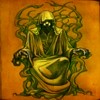
Posted 17 November 2011 - 01:15 PM
Edited by Námo, 20 November 2011 - 11:46 AM.



Posted 19 November 2011 - 05:23 PM
From History of Middle-earth vol. X, 'Myths transformed', Notes on motives in the Silmarillion (ii)Melkor 'incarnated' himself (as Morgoth) permanently. He did so to control the hroa, the 'flesh' or physical matter, of Arda. He attempted to identify himself with it. A vaster, and more perilous, procedure, though of similar sort to the operations of Sauron with the Rings. Thus, outside the Blessed Realm, all 'matter' was likely to have a 'Melkor ingredient', and those who had bodies, nourished by the hroa of Arda, had as it were a tendency, small or great, towards Melkor: they were none of them wholly free of him in their incarnate form, and their bodies had an effect upon their spirits.
But in this way Morgoth lost (or exchanged, or transmuted) the greater part of his 'angelic' powers, of mind and spirit, while gaining a terrible grip upon the physical world. For this reason he had to be fought, mainly by physical force, and enormous material ruin was a probably consequence of any direct combat with him, victorious or otherwise. This is the chief explanation of the constant reluctance of the Valar to come into open battle against Morgoth. Manvë's task and problem was much more difficult than Gandalf's.
Sauron's, relatively smaller, power was concentrated; Morgoth's vast power was disseminated.
The whole of 'Middle-earth' was Morgoth's Ring, though temporarily his attention was mainly upon the North-west. Unless swiftly successful, War against him might well end in reducing all Middle-earth to chaos, possible even all Arda ... the dilemma of the Valar was this: Arda could only be liberated by a physical battle; but a probable result of such a battle was the irretrievable ruin of Arda. Moreover, the final eradication of Sauron (as a power directing evil) was achievable by the destruction of the Ring. No such eradication of Morgoth was possible, since this required the complete disintegration of the 'matter' of Arda.
Sauron's power was not (for example) in gold as such, but in a particular form or shape made of a particular portion of total gold. Morgoth's power was disseminated throughout Gold, if nowhere absolute (for he did not create Gold) it was nowhere absent. (It was this Morgoth-element in matter, indeed, which was a prerequisite for such 'magic' and other evils as Sauron practised with it and upon it.)
It is quite possible, of course, that certain 'elements' or conditions of matter had attracted Morgoth's attention (mainly, unless in the remote past, for reasons of his own plans). For example, all gold (in Middle-earth) seems to have had a specially 'evil' trend - but not silver. Water is represented as being almost entirely free of Morgoth. (This, of course, does not mean that any particular sea, stream, river, well, or even vessel of water could not be poisoned or defiled - as all this could.)
Edited by Námo, 20 November 2011 - 11:48 AM.



Posted 19 November 2011 - 05:39 PM
Definition of WRAITH:
- the exact likeness of a living person seen usually just before death as an apparition.
- GHOST, specter.
- an insubstantial form or semblance : SHADOW
- a barely visible gaseous or vaporous column
Edited by Námo, 20 November 2011 - 11:45 AM.



Posted 20 November 2011 - 11:42 AM
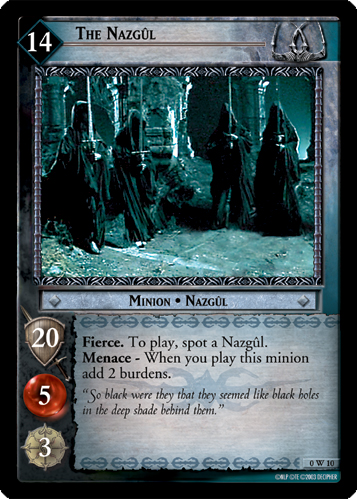
The Nazgûl were Ringwraiths, the Nine (of the Great Rings), thralls of the One Ring, the Ruling Ring.
They were the most trusted servants of the Dark Lord Sauron.
... the Great Rings, the Rings of Power, they were perilous.
'A mortal ... who keeps one of the Great Rings, does not die, but he does not grow or obtain more life, he merely continues, until at last every minute is a wearyness. And if he often uses the Ring to make himself invisible, he fades: he becomes in the end invisible permamently, and walkes in the twilight under the eye of the dark power that rules the Rings. Yes, sooner or later - later, if he is strong or well-meaning to begin with, but neither strength nor good purpose will last - sooner or later the dark power will devour him.'
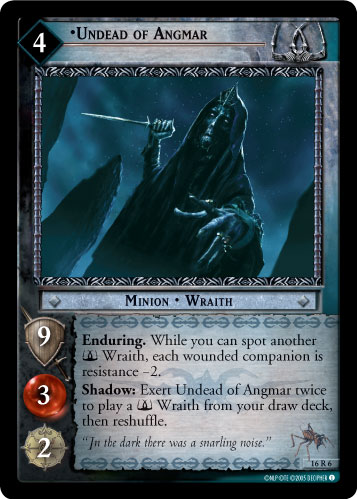
Tolkien only used the term "Undead" once, in Éowyn's stand against the Witch-king:Undead is a collective name for fictional, mythological, or legendary beings that are deceased and yet behave as if alive. Undead may be incorporeal, such as ghosts ... Undead are featured in the legends of most cultures ...
From HoMe vol. VIII, the Battle of the Pelennor Fields.When the Lord of the Nazgûl says to Éowyn 'No living man may hider me!' she replies, as the text was first written: I am no living man. You look upon a woman. Éowyn I am, Éomund's daughter. You stand between me and my kin. Begone! For though I have slain no living thing, yet I will slay the dead [> yet I will slay the Undead].' This rests on the earlier form of the prophecy concerning the Lord of the Nazgûl: 'he is not doomed to fall before men of war or wisdom; but in the hour of his victory to be overthrown by one who has slain no living thing' ... This was changed on the manuscript to: 'Begone, if thou be not deathless! For living or dark undead, I will hew thee, if thou touch me.'
Dwimmerlaik:
An archaic name representing a word in the language of the Rohirrim. It comes from the Old English for 'magical art', implying a spectral being, with the same first element also appearing in Dwimordene ('vale of phantoms', a name for Lórien) and Dwimorberg (the 'Haunted Mountain').
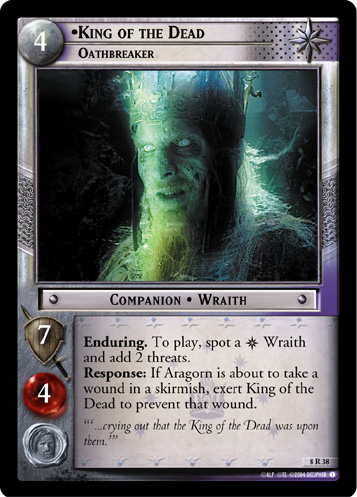
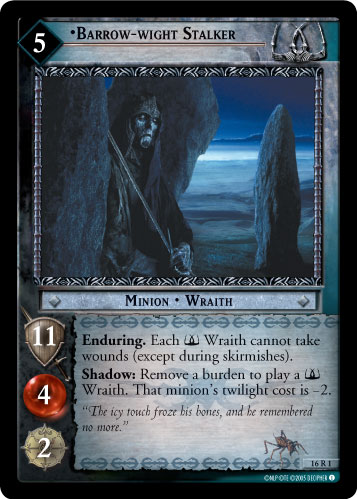
Barrow-wights are wraith-like creatures in J. R. R. Tolkien's world of Middle-earth, based on the Old Norse Draugr. Barrow refers to the burial mounds they inhabited and wight is a Middle English word for "living being" or "creature", especially "human being" [...] Tolkien borrowed this concept from Norse mythology, see e.g. Waking of Angantyr and Hrómundar saga Gripssonar. The name Barrow-wight itself was first recorded in 1869 in the Eiríkr Magnússon and William Morris translation of Grettis saga, which features a fight with such a creature.
Due to his inspiration from Hrómundar saga Gripssonar, during the writing of The Lord of the Rings ... Tolkien at first foresaw a link between the wights and the Ringwraiths, initially describing the Black Riders as horsed wights, but the suggestion that they were the same kind of creatures was dropped in the published work. In the final work there remained a link between them: the wights were now spirits sent by the Witch-king of Angmar.
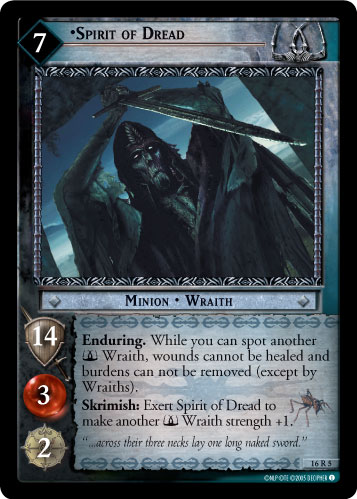
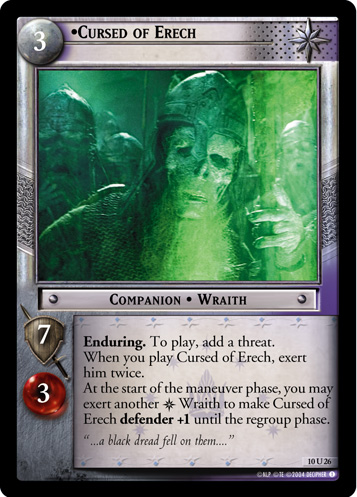
From HoMe vol. VI, Of Gollun and the Ring.The men-wraiths are also servants of the [Dark] Lord.
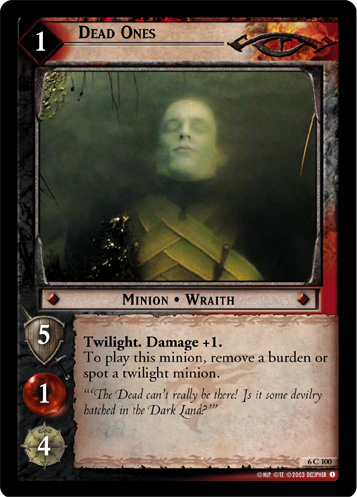
Dead Marshes, the haunted marshlands beside the Battle Plain:
The fetid swamplands that lay between the Emyn Muil and the northern marches of Mordor, the site of many deaths during the War of the Last Alliance, and still said to be haunted at the end of Third Age, three thousand years later.
The name 'Dead Marshes' dates from the Battle of Dagorlad in II 3434. During that terrible battle, the fighting spilled over from the plain into the marshes, leaving many dead. From then on, mysterious faces appeared in the mires, giving rise to the name 'Dead Marshes'.
Edited by Námo, 20 November 2011 - 11:44 AM.



Posted 20 November 2011 - 11:42 AM
Edited by Námo, 20 November 2011 - 11:43 AM.



0 members, 0 guests, 0 anonymous users